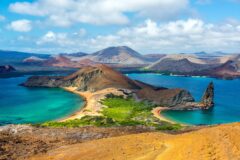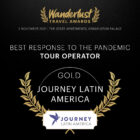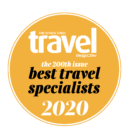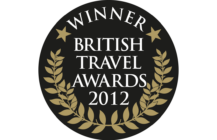Private Journeys
Self-drive Argentina: Highlights of the hidden northwest
14 days
from £3,650pp

Overview & Highlights
Travel from Salta through wild canyons, Spanish colonial towns and vineyards in the Andean northwest, with Buenos Aires and the Iguazú Falls on this self-drive through Argentina.
- Guided walking tour along the Avenida de Mayo, Buenos Aires
- Tango show in Buenos Aires
- 6 days of self-driving in northwest Argentina
- Guided visit to the Argentine side of Iguazú Falls
- Guided visit to the Brazilian side of Iguazú Falls
We’ve enhanced this Argentina self-drive through the Andes of the north-west with time in the magnificent capital, Buenos Aires, and a visit to the stunning Iguazú Falls.
The sunlit mountains and russet-red rockscapes of the provinces of Salta and Jujuy are a rugged canvas interwoven with white colonial churches, characterful markets and adobe villages. The scenery is especially lovely when shades of green, wildflowers and deep red carpets of chilis drying out in the high-altitude sunshine add vibrant glimpses of colour to the view through your windscreen.
Throughout the year, there’s tasty regional food and wine to please your taste buds too. Our self-drive holidays give you freedom as soon as you get behind the wheel but you have the added security of knowing your accommodation is booked for you at the end of a day on the road.
Outline itinerary
Day 1
Arrive in Buenos Aires, transfer to your city-centre hotel.
Day 2
Walking tour along the Avenida de Mayo.
Day 3
Fly to Puerto Iguazú.
Day 4
Guided excursion to the Argentine side of the falls.
Day 5
Guided tour of the Brazilian side of the Falls.
Day 6
Fly to Salta in the northwest. Collect your hire car.
Day 7
Drive to Molinos in your hire car.
Day 8
Self-drive to Cafayate in the wine district.
Day 9
Drive to Purmamarca in the northern canyons by hire car.
Day 10
At leisure to explore the Humahuaca Gorge independently.
Day 11
Return to Salta; overnight.
Day 12
Fly to Buenos Aires
Day 13
At leisure in the capital.
Day 14
Transfer to international airport for your flight home.
Itinerary
Day 1
Arrive in Buenos Aires, transfer to your city-centre hotel.
You will be met at the airport and escorted to your hotel in the historic and commercial heart of the capital by one of our local representatives. Buenos Aires is an elegant, cultured and cosmopolitan city famed for its interesting museums and the fascinating port district of La Boca, with its cobbled streets and brightly painted houses. It was here that the tango was born, and Diego Maradona honed his footballing skills. The centre of town is home to the colonial heartland, government buildings and churches, as well as chic shopping districts, which have a nostalgic Parisian feel.
The bohemian quarter of San Telmo is full of quaint old houses interspersed with antiques shops, tango bars and classy restaurants. Slightly further out of the centre is the Recoleta district, even more evocative of French or Italian influences, where Evita Perón was laid to rest. During the winter months, wealthy female residents parade the streets in their fur coats and improbable, towering hairstyles, and take afternoon tea in the city’s ornate salons.

Day 2
Walking tour along the Avenida de Mayo.
Take a guided walking tour along Avenida del Mayo, one of Buenos Aires’ principal stately arteries, linking the capital’s colonial and political heart at Plaza de Mayo with the Plaza de Congreso, crossing the even more grandiose Avenida 9 de Julio. Built in the 1880s and often compared with similar boulevards in European capitals, it has a definite Old World ambiance, with art deco, art nouveau and neo-classical façades, shaded by leafy trees, lining the route.
The guided walk includes a stop at the world famous Café Tortoni, crammed with memorabilia, the barber’s shop attached, and one of the first metro stations outside the USA and Europe, preserved in its original state as a museum. Visit the very ornate Barolo Palace, designed in accordance with the cosmology of Dante’s Divine Comedy with floors representing heaven, purgatory and hell.

Day 3
Fly to Puerto Iguazú.
Transfer to the airport and fly to Puerto Iguazú in the subtropical northeast corner of Argentina (2 hrs). It’s just a short drive to the national park wherein flow the Iguazú Falls. The Iguazú Falls are unquestionably one of the most extraordinary natural phenomena in the world. A total of 275 falls thunder over a rust-coloured cliff surrounded by dense tropical forest. The U-shaped Devil’s Throat is the most dramatic sight, here the frothing water of the Iguazú River crashes over a 1.5km wide precipice and columns of vapour are thrown skyward. Elsewhere the river flows decorously through the rainforest breaking up into dozens of smaller cascades. You can usually spot colourful toucans and many other exotic birds perched in the foliage above the tumultuous waters.

Day 4
Guided excursion to the Argentine side of the falls.
Today there’s a guided excursion to the Argentine side of the falls. Start at the National Park Visitor Centre, where there is a display illustrating the biodiversity of the tropical rainforest. From here, a little natural-gas-powered train transfers you to Cataratas station where the Upper Walk begins.This sequence of causeways and passerelles links dozens of tiny, basalt islands at the top of the rock face. These walkways cross the myriad streams of the Río Iguazú as they cascade over the lip of the precipice. A succession of lookout points allows your gaze to follow the water, as it plunges onto the rocks below.
You can then continue to the Lower Walk, which involves stairs, and gives you a totally different view of these falls. Climb back up to the train and continue to Devil’s Throat Station. From here, a kilometre-long walkway leads you across the river to the thunderous Garganta del Diablo, which offers a spectacular vantage point peering into the thundering vortex below. This is a full day tour (around 6hrs) and there’s about 3km of walking.

Day 5
Guided tour of the Brazilian side of the Falls.
Cross the bridge which spans the Iguazú river and drive into Brazil.. At the entrance to the National Park, there’s a visitor centre with displays of the biodiversity of the rainforest. You’ll board a shared National Park service here and continue by road for the final stretch to the Falls themselves. There’s a walkway alongside and over the swirling, frothing waters of the agitated river – stroll along it for about a kilometre, with panoramic viewpoints at strategic intervals – you get a view of the whole sweep of the cataracts – it’s an entirely different experience from the Argentine side. Towards the end of the walk you reach an observation tower right bang slap next to one of the most powerful drops of the falls, while a walkway at the bottom takes you out over the water for a closer and much wetter experience.

Day 6
Fly to Salta in the northwest. Collect your hire car.
Fly to Salta (1,500km) in the far northwest. The city is renowned for its colonial architecture, friendly population and mouthwatering Andean specialities. It lies in a fertile plain at the foot of the arid foothills of the Andes, the only Argentine region where vestiges of indian heritage are still visible. Collect your medium-size 2WD rental vehicle. (We recommend upgrading to a 4×4 between Jan-Mar when unsurfaced stretches can become more tricky). Depending on when you arrive in Salta, you will either be taken to pick up your rental car on the way to the hotel, or you will pick it up the following day. You will receive a Fly and Drive kit with maps and useful information about the area and highlights to visit.
Tomorrow, from Salta you’ll set off on an adventurous 5 day circuit starting with an exploration of the Calchaquies Valleys – one of Argentina’s memorable road trips across a cactus-strewn altiplano, gorges lined with improbable rock formations and some of Argentina’s finest vineyards. You’ll continue your discovery following the road north to the Humahuaca gorge whose ancient villages have a distinctly Andean flavour as you approach neighbouring Bolivia.

Day 7
Drive to Molinos in your hire car.
Today’s high-altitude 210km drive is a fine introduction to the north-west. With a stop for lunch en route at the very attractive historic village of Cachi you can easily spend much of the day making your way to tonight’s lodgings. Once out of Salta city the road (route 33) winds and climbs continuously to the Cuesta del Obispo, reaching its highest point at Piedra del Molino (3,340m). If there’s no fog, you’ll get dramatic views across the mountains. Once up on the altiplano, the Recta del Tin Tin is an almost completely straight 14-km stretch of highway which slices its way across the Los Cardones National Park, renowned for its giant cacti. It should take 3-4 hours to reach Cachi (160km, altitude 2,280m) and the onward 50km stretch to Molinos within 2hrs, joining Argentina’s iconic north to south highway Route 40, essentially a gravel road. Take your time and enjoy the day.

Day 8
Self-drive to Cafayate in the wine district.
The arid 120km stretch along the Route 40 to Cafayate is a famously scenic journey with the multi-coloured rock formations at their most astonishing in the Quebrada de las Flechas. The gravel road is slow going and it’ll take at least 3hrs. Sunny Cafayate has some first class eateries and a thriving arts and handicrafts scene. While the surrounding bodegas produce some excellent reds, the town is best known for its torrontés, an aromatic dry white wine. Many bodegas wineries welcome visitors and offer tasting sessions. Upon arrival you have time to park up at your hotel and relax with a glass of one of these highly regarded wines.

Day 9
Drive to Purmamarca in the northern canyons by hire car.
This in an all-day (370km) drive and you may find the surfaced highway a welcome relief after the last couple of days. The first stage brings you back to Salta on Route 68 (192km) taking 3hrs with a fascinating stretch along the Rio Conchas gorge through the Quebrada de Cafayate. Beyond the urban corridor of Salta and Jujuy (Route 9) the landscapes take on a more mountainous, Andean aspect as you approach the timeless small towns and villages of the dramatic Humahuaca gorge, a long canyon of intensely coloured rock dotted with outsized cacti. You have a couple of nights based in Purmamarca, where adobe and stone dwellings blend effortlessly with the arid mountain backdrop as they have done for centuries. The little town is a dozy place in spite of its popularity among visitors: it sits at the foot of the extraordinary palette of the Cerro de Siete Colores (hill of seven colours) where an almost psychedelic rainbow of colours from white to burgundy and gold to jade, stain the naked rock. Culturally the area is fascinating too: there are vestiges of pre-Columbian indigenous civilisations, and some colourful fiestas associated with the catholic calendar.
This extraordinary region is just a few hours’ drive from the border with Bolivia, and has plenty in common with its traditional Andean neighbour.

Day 10
At leisure to explore the Humahuaca Gorge independently.
You have a full day at leisure, based in Purmamarca. It’s well worth exploring the road further north, continuing along the Humahuaca gorge. The little town of Tilcara, with its squat adobe houses and crisp-white baroque church, is close to the partially reconstructed ruins of a pre-Inca “pucará” (fortress) and has an archaeological museum. Continuing north, and passing the villages of Huacalera and Uquía, you arrive at the picturesque town of Humahuaca which once had a station on the now defunct railway which connected Bolivia to Buenos Aires. The ornate church here is stuffed with paintings from the colonial era. The town’s wild west aspect is reminiscent of settlements in Arizona or New Mexico, with narrow cobbled streets and adobe colonial buildings. It’s an hour’s drive back to Purmamarca from here (70km), all on paved road.

Day 11
Return to Salta; overnight.
Drive back to Salta (4hrs). Depending on how quickly you make the journey, you may have time further to explore the city. There is a cable car service up Cerro San Bernado on the edge of town which takes you up to a vantage point where you can survey Salta spread out below on an apron of flat land in the shadow of the Andes – get to it via a walk through the adjacent park. The MAAM archaeological museum is also worth a visit, there are some interesting exhibits relating to the influences of Inca culture on the region. There are also mummies of three mummified Inca children, only one of which is on display at any one time. Or just sit in a pavement café on the main square and watch the friendly and outgoing Saltenos going about their business.

Day 12
Fly to Buenos Aires
Having dropped off your car, fly back to Buenos Aires’s domestic airport, where you will be met and escorted to your hotel. You will be familiar with your hotel and have a good idea about the layout of the central area of the city from your first visit. Depending on the time of your flight, you may have time to step outside and explore some the contrasting neighbourhoods and parks which are a walk or short taxi-ride away.

Day 13
At leisure in the capital.
At leisure in the capital. Stroll round Puerto Madero, the refurbished port district where former dock installations and other nautical features have been preserved alongside a string of excellent restaurants and loft conversions. Beyond the city limits, you might consider a trip across the River Plate to Colonia in Uruguay. Travel along a forest-fringed estuary, dotted with upmarket residences, to this peaceful little port, where you can wander among cobbled streets lined by colonial houses, or have a meal or drink in the yacht club. Alternatively, venture into the watery delta to the small town of Tigre, set on the banks of the Luján river. Have lunch at one of the restaurants on the shores of the Río Paraná, while watching fishermen at work and river-craft gliding by.
In the evening you have a soirée included at one of Buenos Aires celebrated tango shows. (If you are out of town today, you may prefer to have been to the show the night before – that can be arranged.

Day 14
Transfer to international airport for your flight home.
Essentials
Tour info
Transport
3 domestic flights; self-drive in the northwest.
Accommodation
This holiday offers good quality mid-range accommodation in the cities and small towns of the northwest, Buenos Aires and Iguazú.
Meals
Breakfast daily.
Guides
We carefully select our local partners, some of whom we have worked with for over 30 years. Their English-speaking guides understand the expectations of our clients very well, and are consistently singled out for praise by the latter on their return.
Summary Of Nights
14 days, 13 nights: Buenos Aires 2; Iguazú 3; Salta 1; Molinos 1; Cafayate 1; Purmamarca 2; Salta 1; Buenos Aires 2.
Budget
It is very difficult to give a guideline for essential expenses but a budget of around US$50-70 per day should cover the cost of meals not included in the holiday itinerary, drinks and the odd souvenir. Eat at the best restaurants in cities and you will pay considerably more. In addition, you should budget a total of US$100 to cover the cost of fuel.
Currency
The unit of currency in Argentina is the Argentine peso.
How To Take It
For our latest currency advice for Argentina please see our FAQs section.
Tipping
Tips are welcomed and local guides often rely on their tip as a significant proportion of their income.
Most service industry workers will expect a tip of some kind and so it is useful to have spare change for hotel porters, taxi drivers and the like. It is common to leave 10 – 12% in restaurants.
Insurance And Documents
Travel insurance is essential. Details of our recommended policy can be found on our Travel Insurance page.
Car insurance:
Argentina (your trip is based on a medium category 2WD vehicle): Limited collision damage waiver and vehicle theft protection (CDW/TP) cover is included, with an excess payable. Additional CDW/TP cover with zero excess can usually be purchased at additional cost. Please check the level of your coverage with us when making your booking. We strongly recommend you consider buying your own car hire excess waiver insurance policy before you travel: these are widely available from insurance companies in the UK. All incidents involving collision, robbery and theft must be reported to the police and a report obtained. Let us know if the transmission (automatic or manual) is important to you, or if you prefer a different type of vehicle: although we cannot guarantee availability we will do our best to help.
An international driving permit (IDP) is officially required for Argentina. Since 2015 new regulations have applied concerning the paper counterpart of UK driving licences. Please check https://www.gov.uk/government/news/driving-licence-changes for further details.
You will need to return the car to the specified office at the end of the rental period. If you are leaving on a morning flight we advise you to do this the day before you depart.
Airport Taxes
If you have purchased your flights through Journey Latin America, the international departure tax is usually included in the ticket.
Trip Suitability
The self-drive element of this holiday will suit independent-minded clients seeking the freedom to explore without the support of local guides and drivers but with the security of pre-booked accommodation. You should be confident to navigate along roads outside the UK, driving on the right. Some Spanish as well as mechanical knowledge, for example the ability to change a tyre is highly recommended. We advise you to let us know if you have a strong preference for automatic or manual transmission as vehicles supplied can vary. You will receive basic written directions and we will send you our helpful tips specific to driving in Argentina.
There’s about 1000km of driving – 850km on paved highway, the rest on ripio (gravel) roads. A 2-wheel drive vehicle is sufficient to complete the route but a 4×4 will be more comfortable (and is recommended) if you’re going during the rainier months (Jan-Mar) when the gravel stretches of the Calchaquies Valleys can become more challenging. Please speak to us if you wish to upgrade to a 4WD. In all the summer months, Dec-Mar, when the weather is extremely hot and humid, and you might bear this in mind if travelling with small children or elderly persons.
Petrol is easy to come by in Salta and Cafayate – elsewhere be sure to keep an eye on your fuel tank and fill up where possible as you won’t find any service stations in the countryside.
If you have a disability or other special requirements, please call us.
Climate
In Buenos Aires, October to November and March to April see temperatures between 15 and 25°C and a good deal of sunshine. January to February is hot, with temperatures over 30°C.
In sub-tropical Iguazú December to March are the hottest and most humid months, with temperatures sometimes reaching 40°C, and rain which falls in heavy showers. From June to September, temperatures are more moderate (18-23°C) and there is plenty of sunshine, but cold fronts can usher in periods of up to several days of cloud and drizzle and distinctly chilly temperatures.
Salta has plenty of sun throughout the year but it can be cool in winter, but it is drier with little rain falling Apr-Oct. Jan-Feb is the wettest period.
Clothing And Special Equipment
In the southern hemisphere summer (Dec-Mar) it will be hot in both the cities – Buenos Aires and Salta – and the countryside, so take loose-fitting light clothing for maximum comfort. An umbrella offers good protection from tropical showers. You will need sunglasses and head protection. In the shoulder seasons (Apr-May and Oct-Nov) the weather should be similar to a good British summer, while the winter (Jun-Sept) is more like British autumn or spring, so you need clothes appropriate to those climatic conditions.
At the Iguazú Falls you can get very wet from the spray. Some visitors like to take dry clothes in a dry bag.
If you plan to go to good restaurants or out on evening entertainment trips, you might bring something a bit smarter as well (although formal attire will not be required).
Please get in touch with the office before departure if you have any doubts.
Vaccinations
Preventative vaccinations are recommended against the following: polio; tetanus; typhoid. For specific requirements you must consult your GP.
You can also find helpful information on the Masta Travel Health website.
Visas
Holders of a full British passport do not require a visa, although passports must be valid for at least 6 months after the trip begins. Anyone with a different nationality should enquire with us or check with the relevant consulate.
If flying to the US, or via the US you will need to fill in your online ESTA application.
What's included in the price
- Services of our team of experts in our London office
- Services of Journey Latin America local representatives and guides
- All land and air transport within Latin America
- Vehicle hire with limited insurance as specified
- Excursions as specified, including entrance fees
- Accommodation as specified
- Meals as specified
- Excursions as specified, including entrance fees
Included Excursions
- Guided walking tour along the Avenida de Mayo, Buenos Aires
- Tango show in Buenos Aires
- 6 days of self-driving in northwest Argentina
- Guided visit to the Argentine side of Iguazú Falls
- Guided visit to the Brazilian side of Iguazú Falls
What's not included in the price
- International flights to Latin America
- Tips and gratuities
- Meals other than specified
- Airport taxes, when not included in the ticket
- Optional excursions


































